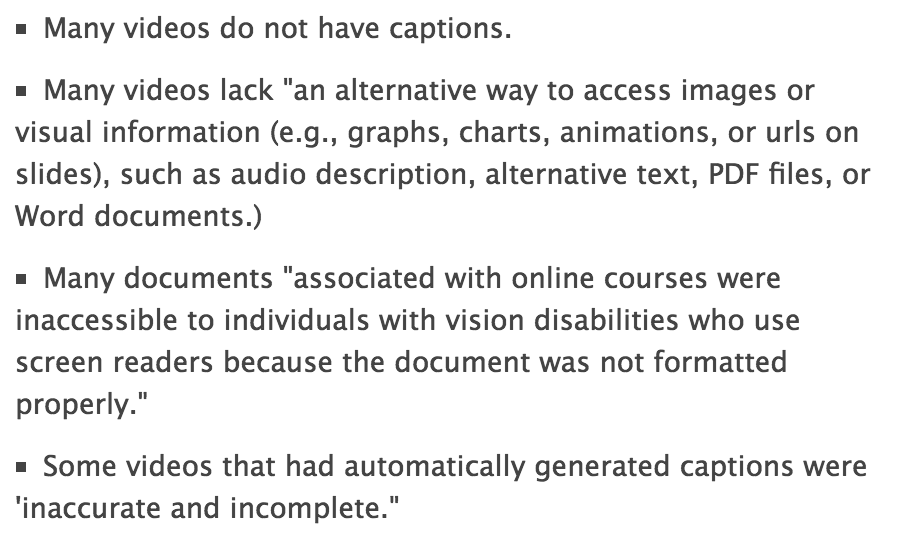Accessibility and Universal Design with VoiceThread
Inside Higher Ed just published an article about the intersection of the two biggest online education topics of the last few years: MOOCs and accessibility. Institutions want to create online courses and content that are available to the wider public, but questions are being raised about whether this content is designed for universal access.
Here are some of the findings from the article:

Many of these problems can be prevented by choosing the right platform to deliver these courses. With VoiceThread, institutions don’t need to re-invent the wheel to make their content work with screen readers. VoiceThread Universal is our screen reader enabled version that requires no extra work for faculty or Instructional Designers. Students who need screen readers can listen to audio comments from their instructors or classmates, but they can also listen to their text comments when they use VoiceThread Universal. Alt text can be added to slide titles to give blind students a way to access images too.
One day, auto-captioning software will be good enough to accurately transcribe the spoken word, but if you’ve ever used them to save time you know how embarrassing the mistakes can be.

Image source: http://readingsounds.net/chapter9/
In 2016, there is no substitute for human transcription, but it doesn’t have to be a laborious process. With just a few clicks, you can upload caption files to VoiceThread comments or videos. We make it easy to not only upload closed caption files, but we can connect you with your favorite third party caption services without leaving your VoiceThread. For institutions that don’t have the resources to pay for a caption service, instructors or instructional support teams can create captions with their free text editors and upload them easily.
Universal Design for Learning (UDL) is about more than adhering to accessibility laws; it is about providing multiple means of engagement, representation and action. Students may be participating from a noisy train on their way home from work, they may be anxious about speaking for a variety of reasons, or they may be dyslexic. While no single tool can handle every specific student need, we believe we provide the most flexibility for course designers and participants. There’s no need to scrap all of your plans to create public content, you just need to plan with the right platform.
